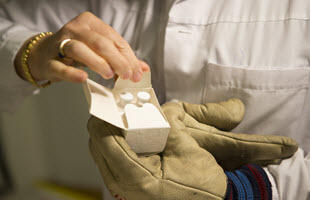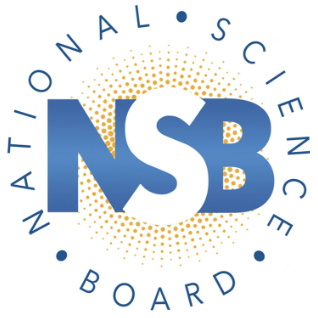Methamphetamine Markets, Personal Relationships, and Families
It is not legal to market methamphetamine in America. There are no agencies regulating sales or setting standards. There are no records of transactions or trends. Product quality is uneven and the ways in which meth is delivered to users varies. So it is not surprising that in a recent study of methamphetamine markets across the country we found considerable variation both in the quality of local product and in the organization and operation of local markets. What was surprising was that no matter what type of market organization or operation we observed or how good or bad the quality of the local product being sold, we found that relationships and transactions in methamphetamine markets were always personal.
Our research team at NORC at the University of Chicago received funding from the National Institute on Drug Abuse to study the dynamics of methamphetamine markets. Our overall aim was to understand the markets from the perspectives of people who participate in them and people whose lives are affected by them. Over four years (2007 to 2011) we conducted a mixed methods study in three stages. First, to learn where the meth markets were located in the United States and to be able to distinguish different types of markets we conducted a survey of 1,367 police agencies including at least one from every state. We started with the police because they are the only social institution in every community that has to know something about illicit drug markets. Drug treatment or prevention workers or social service providers, for example, would know about users and their problems, but not necessarily about markets. We analyzed the survey data to classify types of markets in different communities and selected 50 local areas. Then we conducted open-ended, in-depth telephone interviews with narcotics detectives who had direct involvement with local meth markets. The interviews allowed us to learn more about the organization and operation of different types of markets, and where there were people who could and would introduce us to market participants. Based on what we learned from the interviews, the third stage of our study involved visits to more than 28 cities and towns in five regions of the country (Southeast, Middle Atlantic, Midwest, Southwest, and Pacific Northwest). In and around each we observed and talked not only with local police but also with local and regional public health and safety officials, drug treatment and prevention workers, social service and family service providers, meth users and dealers, and other people whose lives intersected with the meth markets in their community. In addition, alone or with a guide we walked or drove through areas known to house meth users and dealers or to be a place where meth transactions occurred. We attended community events where local citizens talked about personal and community issues and problems related to local meth use and markets. And we toured the U.S.-Mexico border guided by a member of the U.S. Border Patrol.
Markets for different drugs are organized and operate in different ways. For example, if you want to buy crack cocaine you can walk up to a stranger on a street corner and make the transaction. To buy methamphetamine you have to know someone. From our study we learned that there are different types of meth markets and different mixes of markets in different places, but they are always based on personal relationships. To buy meth you have to deal with someone who knows and trusts you. Wherever we went and whenever we asked where we would go to purchase meth in the area, the answer was the same: “You can’t. You have to know someone.”
In some of the places we visited we found small mom-and-pop operations where a local cook made sufficient methamphetamine paste or powder of reasonable quality to provide product for him or herself and a few friends or acquaintances. In the areas with mom-and-pop production the markets were clearly centered on personal relationships. Typically they took the form of a social club with family members, friends, or acquaintances from the surrounding community getting together at the home of a meth cook. Interestingly, these social gatherings worked because federal and state legislation thwarted the acquisition of large enough quantities of the chemicals needed to make meth in a traditional home lab. In response to the legislation meth cooks developed new technologies and new ways to obtain the needed ingredients. Instead of one person buying lots of cold medicine capsules, several people each bought the maximum amount the law would allow and together pooled what they got, a process that came to be known as smurfing. Also, the one-pot or shake-and-bake technique was developed. While still dangerous, this is a simpler process needing a smaller quantity of pseudoephedrine (the ingredient from cold tablets needed to make meth). Mix all the ingredients together in the correct sequence in a two-liter bottle, shake, let the gas out of the bottle (be careful it does not explode), and serve. The clubs formed as people would bring their share of cold medicine capsules to the home of a known and trusted cook who would make enough meth for all of them to get high together.
In other places we found import markets with product mostly from Mexico, a higher quality crystal meth that was brought to the area by large-scale Mexican business organizations (sometimes called cartels) and sold through smaller scale locally-based dealers to customers they knew. In some of these places the meth was brought to the area to be warehoused for later distribution to markets throughout the region by other local smaller scale dealers. So in these areas with imported product the local sale of meth to users might not seem to be as personal as we found it to be in areas with mom-and-pop labs. Nonetheless, moving meth from a seller to an actual user still depended on a relationship based on personal knowledge and trust. The local sales representatives working for the Mexican import organization would recruit local people with established ties to the local meth community to sell small quantities to local users on their behalf. In parts of the country with a long history of immigration from Mexico, such as the Southwest or Pacific Northwest, the local sellers might be Mexican. But in places where local native white users might not be comfortable dealing with people recently arrived from Mexico, as in the Southeast or Middle Atlantic, the importers would set up a locally known and trusted native white user in a small retail business, sort of like a franchise, selling meth to other local users.
Dealings in local meth markets involve people who share personal relationships, so naturally participation in a meth market overlaps with personal relationships in other spheres of social life. As noted above, the social circles of meth market participation involve acquaintances, friends, and family. Through our study of meth market dynamics we found that the extent to which market participation overlaps with family life is significant. People across the country, particularly users and dealers and social service and family service providers, made it clear to us that, as one woman said to us, methamphetamine “is a family drug.”
Across the nation the people we met told us that to understand methamphetamine markets we needed to understand the relationship of the markets to families and particularly children. It is well known that in places where people cook meth, even using the one-pot or shake-and-bake method, they often cook with children around, exposing them not only to unsanitary conditions but to toxic chemicals and fumes, the potential for explosions and fires, and to people whose response to using the drug may make them undesirable companions for their children. Beyond that, we met parents who had long ago neglected their children, or if they did pay attention to them it was not uncommon for them to have introduced their children to meth use or even dealing. We spoke to parents and grandparents who told us they introduced their children and grandchildren to methamphetamine so they would feel closer to them. We met a mother whose daughter at age 14 took over the family meth dealing business when the mother became too sick from using to continue. We met family service providers who told us that they were “treating second and third generations” of the same family, children and even grandchildren. A woman we met told us how her dealer used her addiction to meth to encourage her to introduce her children to him so he might start selling to them.
Obviously there is much more to the story of methamphetamine markets than we could possibly recount in these few paragraphs. But from our research the conclusion remains that methamphetamine markets in particular are organized and operate through the personal relationships of the people who participate in those markets. Consequently perhaps methamphetamine markets are different enough from other illicit drug markets that policies, programs, and practices to address them and the problems associated with them need to be different. In any case, however we deal with meth markets we need to understand and appreciate the importance of the personal relationships that hold them together.
Submitted by:
Henry H. Brownstein, PhD, Senior Fellow, NORC at the University of Chicago
Timothy M. Mulcahy, MA, Principal Research Scientist, NORC at the University of Chicago
Johannes Fernandes-Huessy, MA, Senior Research Analyst, NORC at the University of Chicago
Bruce G. Taylor, PhD, Principal Research Scientist, NORC at the University of Chicago
Carol Hafford, PhD, Senior Research Scientist, NORC at the University of Chicago
Disclaimer and Acknowledgment
This submission is based on research that was funded by the National Institute on Drug Abuse (NIDA) for a study of the Dynamics of Methamphetamine Markets (R21D024391). An earlier version was published in the American Sociological Association’s Contexts (2012, volume 11, number 1, pages 30-35). However, opinions and points of view are those of the authors alone and do not represent those of any other individual or organization, including NORC at the University of Chicago or NIDA.






















































































